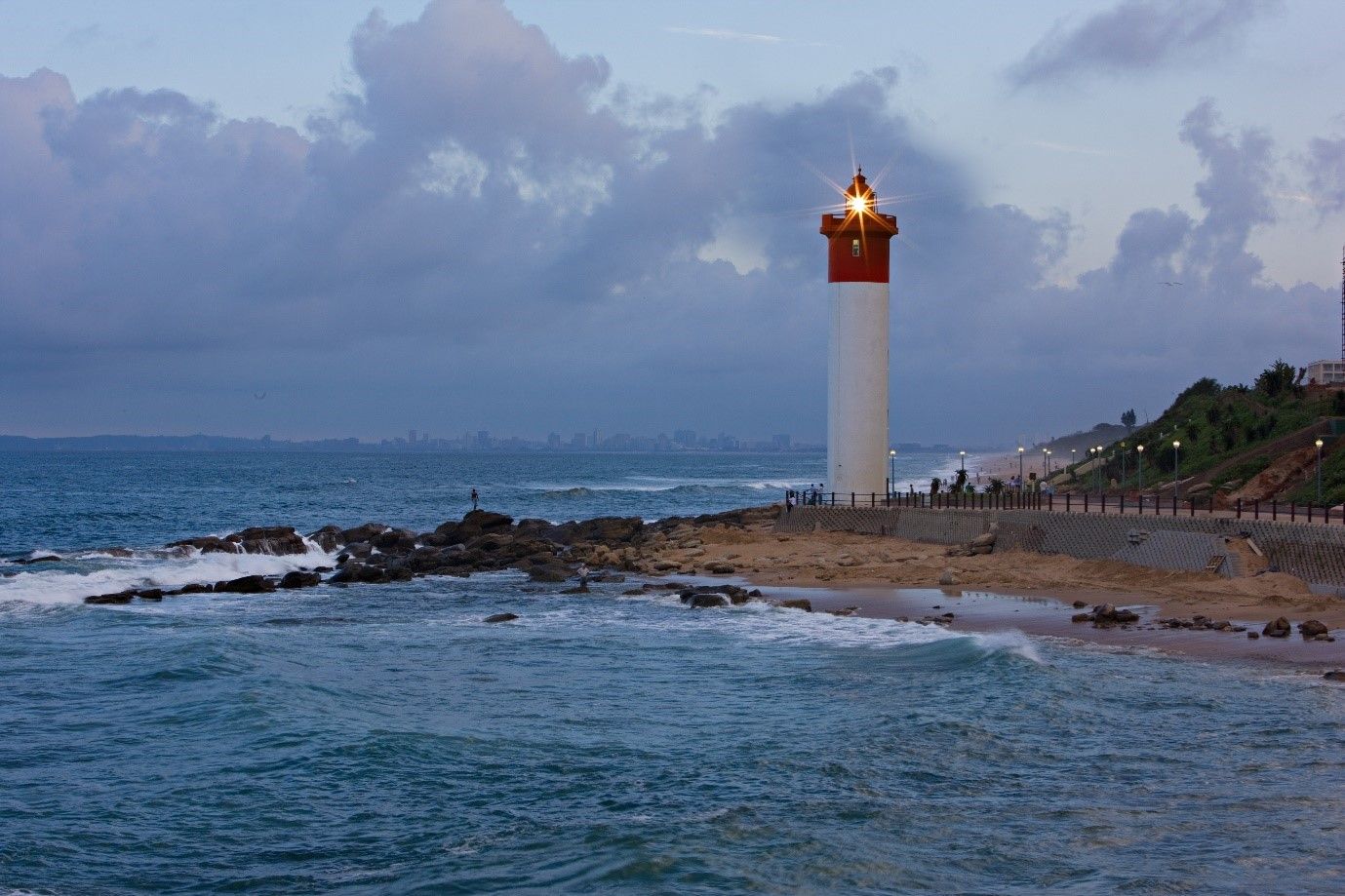SOUTH AFRICA : UMHLANGA ROCKS LIGHTHOUSE MARKS 70 YEARS AS A BEACON OF SAFE NAVIGATION
One of South Africa’s most recognisable sites, uMhlanga Rocks Lighthouse today celebrates its 70th anniversary. The Lighthouse was first lit by Transnet National Ports Authority (TNPA) on the night of 25 November 1954.
The uMhlanga Rocks tower was built soon after the opening of nearby Cooper Lighthouse in Durban, which was commissioned on 31 July 1953. It took just four days and 19 hours to construct and was commissioned a year later. The original site for the uMhlanga Rocks Lighthouse was on the grounds of the Oyster Box Hotel. When 33 centimetres of rain fell in less than 24 hours in January 1953 and caused erosion close to the proposed site, the current location was chosen because it had a rock foundation.
Situated on the uMhlanga Promenade, approximately 15 kilometres from Durban Central, the 21metre cylindrical concrete tower is painted white, with a red top and red lantern house. The rotating lens system produces three flashes every 20 seconds.
The lighthouse is automated and TNPA carries out scheduled maintenance. It is one of the two lighthouses built to replace the Bluff Lighthouse; Cooper Lighthouse is the other. Bluff Lighthouse was in operation from 1867 until 1940 and was demolished in 1941 to make way for the placement of heavy artillery guns for World War II.
Other lighthouses in KwaZulu-Natal are Cape Vidal (1985), Cooper (1953), Durnford (1916), Green Point (1905), Ifafa (1980), Jesser Point (1986), North Sand Bluff (1968), Port Shepstone (1906), Richards Bay (1979 original concrete structure, 2018 current structure) and Tugela (1972).
The National Ports Act, 2005 (Act No.12 of 2005) mandates TNPA to provide, operate and maintain lighthouses and other marine Aids to Navigation (AtoNs) to assist the navigation of vessels within commercial port limits and along the coast of South Africa. Lighthouses, beacons, and buoys are the most common types of visual AtoNs.
Source : TNPA





